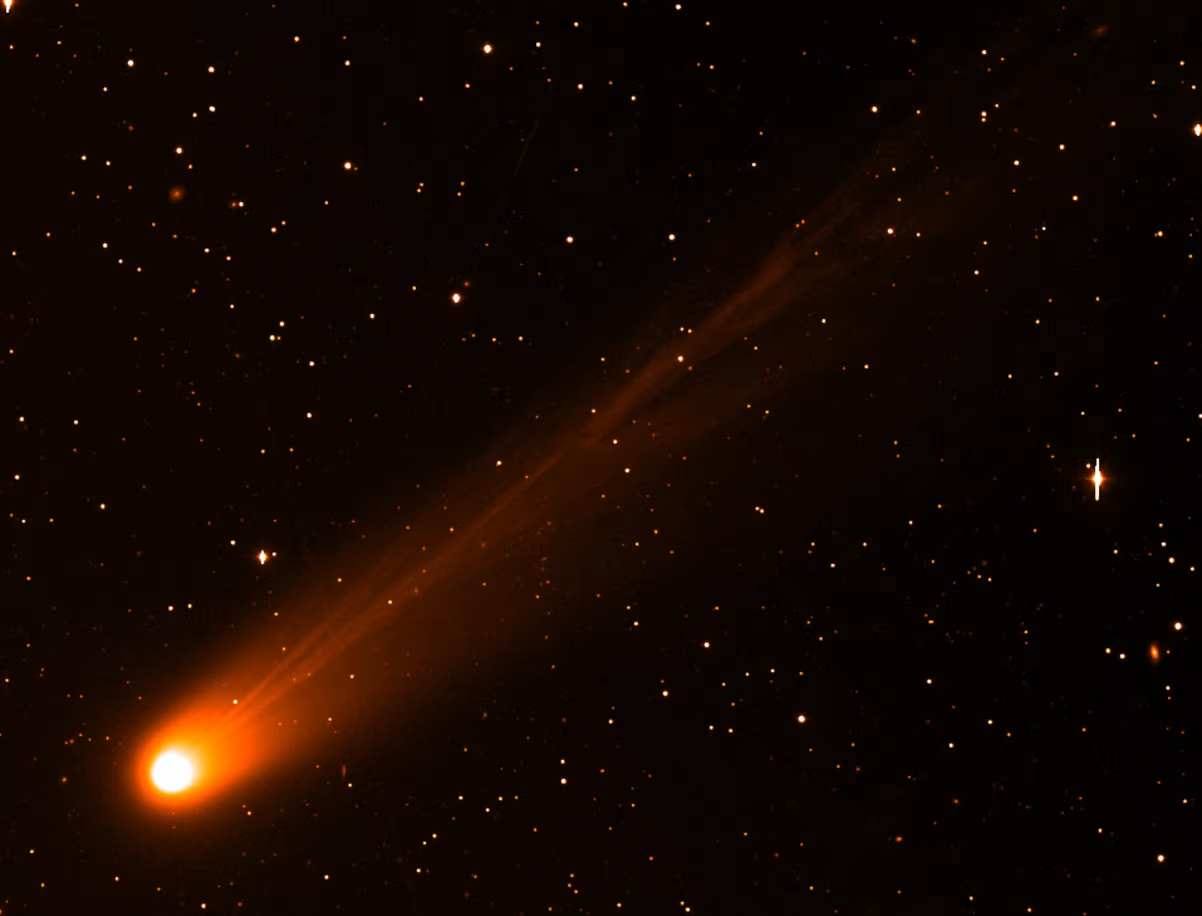The enigmatic interstellar comet 3I/ATLAS, an object confirmed to have originated from a star system beyond our own, recently reached its perihelion—the point of its closest pass to the Sun. According to EarthSky, the comet came within roughly 126 million miles (203 million kilometers) of our star. Although its current position places it behind the Sun from the perspective of most Earth-based telescopes, astronomers anticipate a renewed viewing window soon. Stargazers equipped with appropriate instruments should be able to spot the object in the predawn sky beginning November 11.
This period is critical, as astronomers have only a few more months to observe the comet before it begins its final outbound journey, heading out of our solar system entirely, according to Darryl Seligman, an assistant professor at Michigan State University. The comet presents no threat to Earth, with its closest approach scheduled for December 19, when it will pass within approximately 168 million miles (270 million kilometers) of our planet, as confirmed by the [European Space Agency]. Since its discovery on July 1, the urgency to observe this object, one of only three confirmed interstellar visitors, has driven intense scrutiny using both ground-based and space-based assets.
Unlocking the Primordial Composition of an Interstellar “Snowball”
Comets are often described as “dirty snowballs,” celestial remnants composed of ice, dust, and rocks left over from the formation of star systems. The solid core, or nucleus, of a comet releases gas and dust when heated by a star, creating the characteristic signature tails. For astronomers, observing 3I/ATLAS as it neared the Sun provided the most “holistic view of the nucleus possible,” offering clues about its composition and, by extension, the environment of its stellar birth. Scientists were particularly focused on the volatile materials being released. Observations utilizing powerful tools like the Hubble Space y James Webb Space telescopes, alongside missions such as SPHEREx, successfully detected the release of a variety of compounds, including carbon dioxide, water, carbon monoxide, carbonyl sulfide, and water ice.
The presence of carbon dioxide, which turns directly into a gas much more easily than most other elements, suggests that 3I/ATLAS has likely never made a close approach to another star prior to its recent pass by our Sun, preserving its initial primordial material. Preliminary estimates, detailed in a study coauthored by Seligman and Aster Taylor, suggest the comet is incredibly ancient, possibly 3 billion to 11 billion years old, dwarfing the estimated 4.6 billion years of our own solar system. More information on the composition of comets and space objects is available from [NASA’s official documentation].
Global Efforts to Track a Fading Target
The tracking and observation of 3I/ATLAS is a demonstration of global scientific collaboration, involving multiple missions even after it moved beyond the view of most ground-based observatories in October. While data sharing from NASA missions has been affected by operational delays, space-based instruments like PUNCH (Polarimeter to Unify the Corona and Heliosphere) and SOHO (Solar and Heliospheric Observatory) maintained continuous observation. The comet also made a close pass by Mars on October 3, coming within 18.6 million miles (30 million kilometers) of the red planet.
This provided a unique opportunity for orbiting spacecraft, including the ESA’s Mars Express and the ExoMars Trace Gas Orbiter, to attempt views. Although the cameras on these missions are optimized for the closer, brighter surface of Mars, the ExoMars Trace Gas Orbiter successfully captured the comet, describing it as a fuzzy white dot, despite the target being 10,000 to 100,000 times “fainter” than their usual subjects. The European Space Agency’s Juice (Jupiter Icy Moons Explorer) mission will also attempt to observe 3I/ATLAS in November, using multiple instruments, although scientists anticipate a delay until February to receive the data due to the spacecraft’s transmission rate.
These final months of observation are critical, promising “amazing science” as the object speeds away. Details on current and planned European space missions can be accessed through the [ESA’s mission overview].
Interstellar Objects: Catalysts for Planetary Science
Interstellar objects like 3I/ATLAS and its predecessor, ‘Oumuamua, are revolutionary tools in planetary science because they provide astronomers with undiluted samples of matter from other star systems. By studying their composition, trajectory, and physical behavior—such as the unique nature of the gases released upon heating—scientists can infer the conditions of planetary formation in distant stellar nurseries. The discovery of such objects, even if rare, provides compelling evidence that material exchange between star systems is a real and measurable phenomenon.
This understanding contributes significantly to theories about the origins of water and organic molecules on planets, suggesting that the “ingredients” for life may be universally distributed throughout the galaxy. For those interested in the ongoing search for and cataloging of these rare celestial travelers, the [Minor Planet Center’s records] provide official tracking data.
Moreover, the detailed spectroscopic analysis of the volatiles on 3I/ATLAS, particularly the mix of ices, offers a direct comparative study against comets formed in our own solar system’s Kuiper Belt and Oort Cloud, enabling an unparalleled analysis of exoplanetary composition. The pursuit of comparative planetary science and the implications of this interstellar visitor are often discussed in publications like the [Journal of Geophysical Research: Planets].



